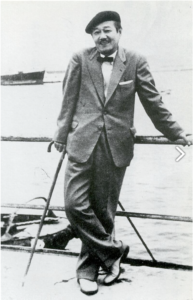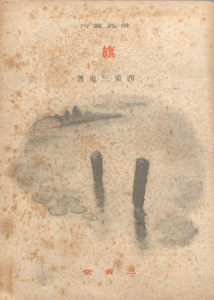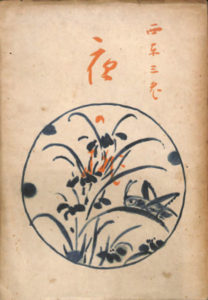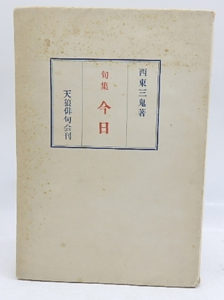 Sanki Saitō was born in western Japan in 1900. He trained as a dentist, working first in Singapore and later in Tokyo. He did not begin to write haiku until the age of 33, but he then rapidly became a leading figure in the poetically radical New Rising Haiku movement, writing non-seasonal and anti-war haiku. He was silenced in 1940, after publishing his first collection, Flag, having been arrested by the Special Higher Police on the charge of violating the Peace Preservation Law. He was given a suspended sentence and forbidden to write. In 1942 he left Tokyo for Kobe; his Bohemian life in the wartime port city before its destruction is vividly described in his memoirs Kobe and Kobe Sequel. After 1945 he began to write again and published three major collections of haiku that set a benchmark for postwar haiku: A Peach at Night (1948), Today (1952) and Metamorphoses (1962). From 1956 to 1957 he was editor of Haiku, Japan’s leading haiku journal. He died of stomach cancer in 1962 in Hayama, Kanagawa Prefecture. More than six decades after his death, Sanki is still embraced as truly unique not only by haiku poets both radical and traditional, but also tanka and free verse poets.
Sanki Saitō was born in western Japan in 1900. He trained as a dentist, working first in Singapore and later in Tokyo. He did not begin to write haiku until the age of 33, but he then rapidly became a leading figure in the poetically radical New Rising Haiku movement, writing non-seasonal and anti-war haiku. He was silenced in 1940, after publishing his first collection, Flag, having been arrested by the Special Higher Police on the charge of violating the Peace Preservation Law. He was given a suspended sentence and forbidden to write. In 1942 he left Tokyo for Kobe; his Bohemian life in the wartime port city before its destruction is vividly described in his memoirs Kobe and Kobe Sequel. After 1945 he began to write again and published three major collections of haiku that set a benchmark for postwar haiku: A Peach at Night (1948), Today (1952) and Metamorphoses (1962). From 1956 to 1957 he was editor of Haiku, Japan’s leading haiku journal. He died of stomach cancer in 1962 in Hayama, Kanagawa Prefecture. More than six decades after his death, Sanki is still embraced as truly unique not only by haiku poets both radical and traditional, but also tanka and free verse poets.
Photograph: Sanki in Yokohama, 1950s.
First editions of Hata (Flag, 1940), Yoru no momo (A Peach at Night, 1948), Konn’ichi (Today, 1952), and Henshin (Metamorphoses, 1962).



